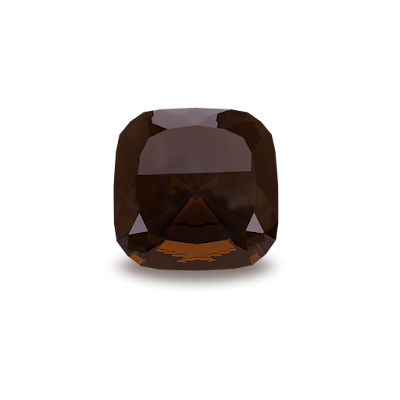If you’ve ever been captivated by gemstones that exude earthy elegance and mysterious charm, Smoky Quartz might just be your new favorite. With its warm, smoky hues ranging from translucent gray to deep, espresso-brown, this crystal isn’t just a pretty face—it’s steeped in history, metaphysical lore, and practical uses. Whether you’re a gemstone enthusiast, a jewelry lover, or someone exploring healing crystals, this guide dives into everything you need to know about Smoky Quartz.
What Is Smoky Quartz?
Let’s start with the basics. Smoky Quartz is a variety of quartz, one of the most abundant minerals on Earth. But what gives it that signature “smoky” appearance? The answer lies in its formation.
Science Behind the Color
Smoky Quartz gets its distinctive color from natural irradiation. When trace amounts of aluminum within the quartz are exposed to natural radiation (from the Earth over millions of years), the crystal structure alters, creating its signature gray-to-brown shades. The deeper the color, the longer the crystal was exposed to radiation.
Physical Properties
- Hardness: 7 on the Mohs scale (durable enough for everyday wear).
- Luster: Vitreous (glass-like).
- Transparency: Transparent to translucent.
- Common Sources: Brazil, Madagascar, Scotland (Cairngorm Mountains), Switzerland, and the U.S. (Colorado, Maine).
A Journey Through History: Smoky Quartz in Lore and Culture
Smoky Quartz isn’t just a modern gemstone—it’s been cherished for centuries.
Ancient Civilizations
- Roman Era: Soldiers carried Smoky Quartz as protective talismans in battle.
- Celtic Traditions: Scottish clans used Cairngorm stones in ceremonial pins and kilt accessories.
- Chinese Culture: Artisans carved it into snuff bottles and decorative objects, valuing its grounding energy.
Myth and Mystery
Some legends claim Smoky Quartz is “frozen smoke” from the underworld, acting as a bridge between the physical and spiritual realms. While science explains its color, the mystique remains part of its allure.
Metaphysical Properties: More Than Just a Pretty Stone
For centuries, Smoky Quartz has been celebrated not just for its beauty but for its reputed healing and spiritual benefits. Whether you’re a skeptic or a believer, these properties add depth to its appeal.
Grounding and Protection
Often called the “Stone of Power,” Smoky Quartz is associated with:
- Emotional Stability: Believed to dissolve negative emotions like fear, anger, or stress.
- Energetic Shielding: Said to absorb and transmute negative energy, making it a popular choice for empaths.
- Root Chakra Activation: Linked to grounding and connecting with Earth’s energy.
Practical Spiritual Uses
- Place it in your workspace to foster focus.
- Meditate with it to release mental clutter.
- Keep it near electronic devices to “neutralize” electromagnetic frequencies (a common belief in crystal healing communities).
Smoky Quartz in Jewelry: Timeless Style Meets Durability
Thanks to its hardness and versatility, Smoky Quartz is a favorite among jewelers. Here’s how to rock this gem:
Popular Jewelry Styles
- Rings: Its neutral tones pair well with silver, gold, or rose gold settings.
- Pendants: A faceted Smoky Quartz pendant adds sophistication to casual or formal outfits.
- Statement Pieces: Designers often use large, raw stones for bohemian-style earrings or bracelets.
Styling Tips
- Day to Night: Pair a Smoky Quartz necklace with a white shirt for daytime elegance, then layer it with a choker for evening drama.
- Color Combinations: Complement its earthy tones with deep greens (emerald), warm oranges (carnelian), or cool blues (sapphire).
Affordability
Compared to diamonds or emeralds, Smoky Quartz is relatively affordable. Prices vary based on:
- Color Depth: Darker stones (like “Morion”) are rarer.
- Clarity: Eye-clean stones (no visible inclusions) command higher prices.
- Cut: Precision-cut gems enhance brilliance.
How to Spot Genuine Smoky Quartz
With its rising popularity, imitation stones have flooded the market. Here’s how to ensure you’re buying the real deal:
Common Imitations
- Glass: Lacks natural inclusions and feels lighter.
- Synthetic Quartz: Lab-created stones may have “too perfect” clarity.
- Dyed Crystals: Uneven color distribution (check for dye concentration in cracks).
Authenticity Tests
- Hardness Check: Quartz can scratch glass; imitations often can’t.
- Inclusions: Natural stones may have tiny imperfections (liquid or mineral traces).
- Professional Appraisal: For high-value pieces, consult a gemologist.
Caring for Your Smoky Quartz
To keep your gem looking its best:
Cleaning
- Use warm water, mild soap, and a soft brush.
- Avoid harsh chemicals (bleach, ammonia) or ultrasonic cleaners.
Storage
- Wrap in a soft cloth or store in a separate compartment to prevent scratches.
- Keep away from prolonged sunlight to prevent fading (rare, but possible in lighter stones).
Recharging Energy
If you use it metaphysically, “recharge” it by:
- Placing it on a selenite plate.
- Burying it in soil overnight.
Where to Buy Smoky Quartz
Trusted Sources
- Local Jewelers: Support small businesses and inspect stones in person.
- Online Retailers: Etsy, Gemstone-specific sites (e.g., EnergyMuse, The Crystal Council).
- Gem Shows: Great for comparing quality and prices.
Price Ranges
- Tumbled Stones: 5-20.
- Small Jewelry: 30-150.
- High-End Pieces: $200+ for large, premium gems.
Final Thoughts: Why Smoky Quartz Deserves a Spot in Your Collection
Smoky Quartz is more than a gemstone—it’s a conversation starter, a style staple, and a tool for personal growth. Whether you’re drawn to its aesthetic warmth, intrigued by its lore, or curious about its grounding energy, this crystal offers something for everyone.















0 Comments